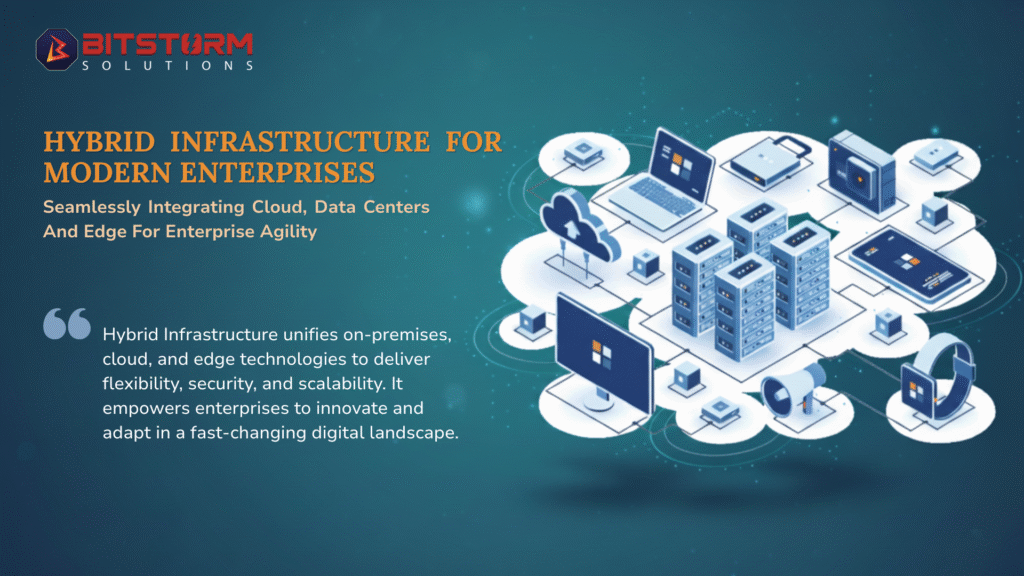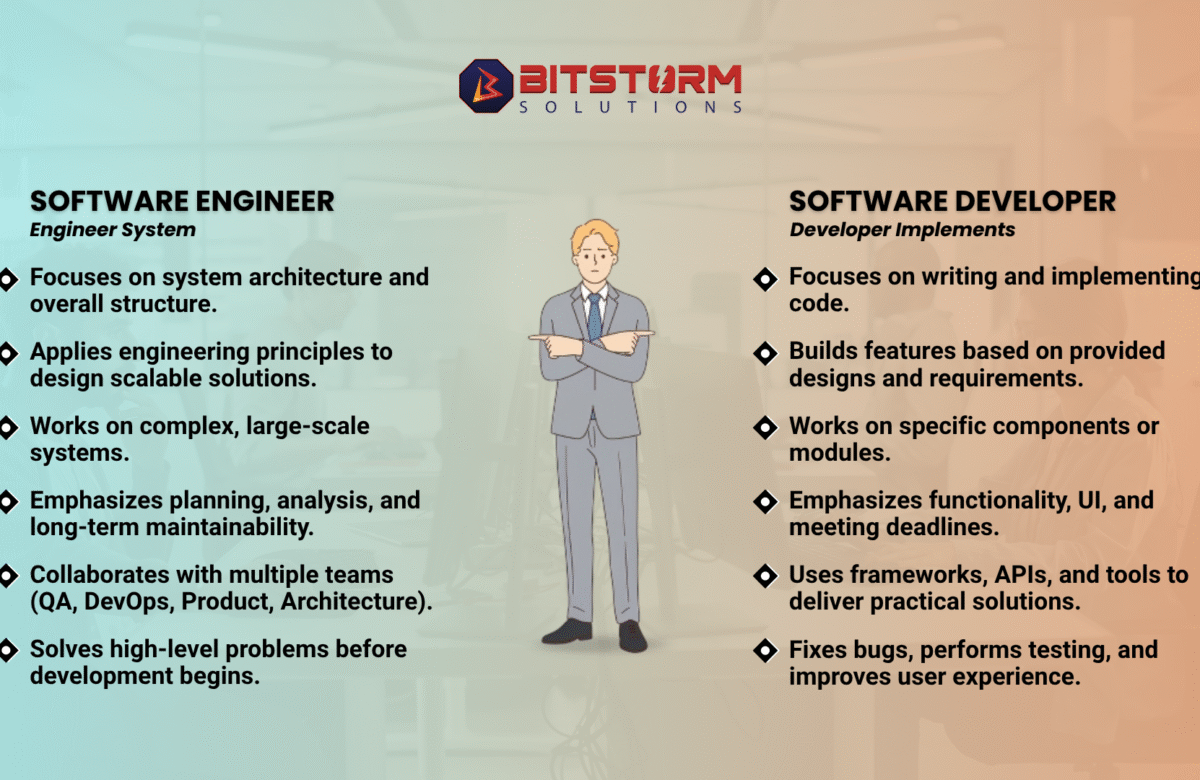
Unifying Cloud, Data Centers, and Edge for Enterprise Agility
In today’s digital economy, enterprises are under constant pressure to innovate, scale, and remain secure all while delivering consistent value to customers. Traditional IT models, which relied solely on on-premises infrastructure, struggle to keep pace with modern demands. This is where hybrid infrastructure comes in a strategic blend of on-premises data centers, private cloud, public cloud, and edge computing that enables enterprises to achieve agility, resilience, and scalability.
Hybrid infrastructure is no longer a trend; it’s a necessity for enterprises navigating the complexities of digital transformation.
What is Hybrid Infrastructure?
Hybrid infrastructure is an integrated IT framework that allows organizations to leverage the best of multiple environments. Instead of depending on a single platform, enterprises can seamlessly distribute workloads across data centers, cloud environments, and edge locations depending on performance, cost, and compliance needs.
For example, an enterprise may:
- Run critical, sensitive workloads in a private data center for maximum control.
- Use the public cloud for rapid scaling during seasonal demand.
- Deploy edge computing to power IoT devices, ensuring real-time responses.
- Utilize containerization for consistent application deployment across all environments.
Key Components of Hybrid Infrastructure
- On-Premises Data Centers
- Best suited for mission-critical workloads requiring high security, compliance, and control.
- Allows organizations to manage legacy systems while integrating them with modern solutions.
- Private Cloud
- Offers cloud-like benefits but in a controlled environment.
- Ensures data sovereignty, governance, and resource allocation tailored to enterprise needs.
- Public Cloud
- Provides scalability and global reach at optimized costs.
- Enables rapid provisioning of resources for development, testing, or customer-facing apps.
- Major providers: AWS, Microsoft Azure, Google Cloud.
- Edge Computing
- Brings compute and storage closer to where data is generated (factories, hospitals, retail stores, or IoT devices).
- Reduces latency, supports real-time analytics, and enhances user experience.
- Containerization & Orchestration
- Containers (e.g., Docker) allow applications to run consistently across environments.
- Orchestration tools (e.g., Kubernetes) automate scaling, failover, and deployment.
Benefits of Hybrid Infrastructure for Enterprises
Business Agility & Innovation
Accelerates application deployment, enabling enterprises to respond faster to market changes.
Resilience & Continuity
With workloads distributed across environments, businesses avoid single points of failure, ensuring high availability.
Optimized Costs
Enterprises can place workloads where they are most cost-effective (e.g., archival data in public cloud, mission-critical in private).
Enhanced Security & Compliance
Sensitive data remains on-premises or in a private cloud, while non-sensitive workloads utilize the public cloud.
Improved User Experience
Edge computing ensures reduced latency, real-time insights, and faster customer response times.
Use Cases of Hybrid Infrastructure
Healthcare: Real-time patient monitoring at the edge with sensitive health records stored securely in private data centers.
Retail: Personalized shopping powered by AI in the cloud, with POS systems running at edge locations for seamless operations.
Manufacturing: IoT-enabled machinery monitoring via edge computing, with analytics processed in the cloud.
Financial Services: High-frequency trading applications running in data centers, combined with AI-driven customer insights in the public cloud.
Challenges in Adopting Hybrid Infrastructure
While the benefits are substantial, enterprises must also address:
Complexity in Integration Ensuring seamless interoperability across different environments.
Security Concerns Managing consistent security policies across on-premises, cloud, and edge.
Cost Management Preventing cloud overspending while maintaining efficiency.
Skill Gaps Teams require expertise in multiple technologies, from Kubernetes to multi-cloud management.
The Future of Enterprise IT is Hybrid
As enterprises continue their digital transformation journey, hybrid infrastructure will form the backbone of IT strategy. With the convergence of AI, IoT, and 5G, the need for agile, scalable, and distributed infrastructure will only increase.
Organizations that adopt hybrid models now will not only future-proof their operations but also unlock competitive advantages through innovation, customer experience, and operational excellence.
Hybrid infrastructure is more than just an IT framework, it’s the foundation for enterprise agility in the digital era.
The future of retail will belong to those who leverage intelligence, not assumptions.



